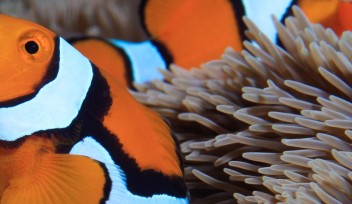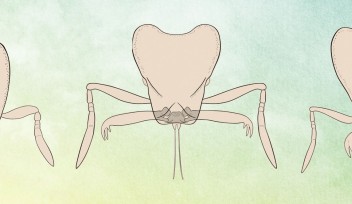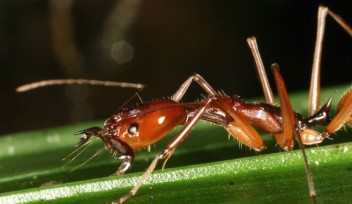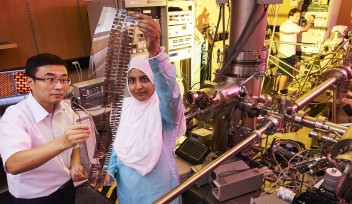NTT and OIST make first simultaneous atmospheric and marine observations directly beneath Cat 5 typhoon in NW Pacific
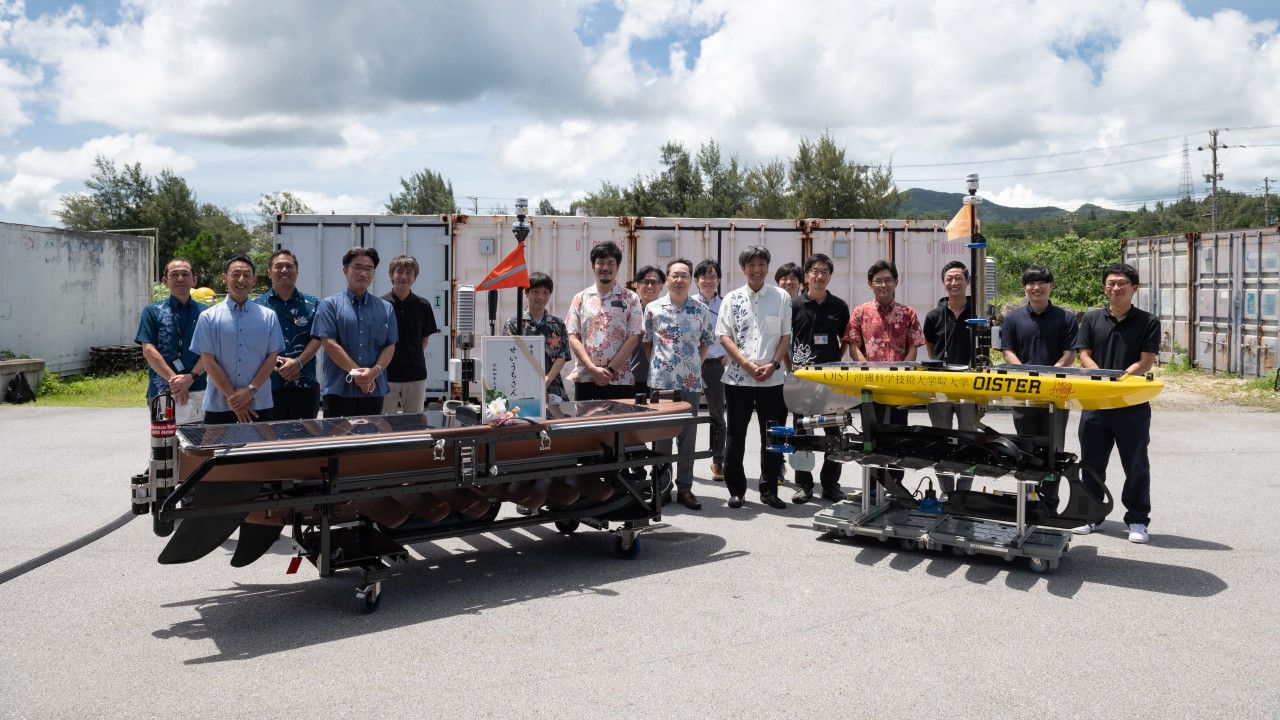
Joint Press Release
Nippon Telegraph and Telephone Corporation (NTT, Head Office: Chiyoda-ku, Tokyo; President & CEO: Akira Shimada) and the Okinawa Institute of Science and Technology (OIST, Head office: Onna-son, Kunigami-gun, Okinawa, Japan, Acting President: Dr. Albrecht Wagner) have successfully conducted the world’s first simultaneous marine and atmospheric measurements at multiple locations directly beneath a violent, Category 5*1, which is the strongest class, typhoon in the North-West Pacific, before it reached land.
These observations were made directly beneath typhoon No. 11, called “Hinnamnor”/”Henry”, in the summer of 2022. NTT and OIST plan to continue joint research contributing to observation methods that improve the accuracy of typhoon predictions, and to explain the mechanisms of interaction between the atmosphere and ocean using observation data from directly beneath typhoons.
1.Background
Typhoons, which can have major impacts on society and the environment, have recently been intensifying in strength and causing more damage due to global warming and other climate change effects. To prepare effectively for a typhoon, it is important to have an accurate understanding, as early as possible, of how the storm conditions will be upon landfall. However, there is currently no way to accurately know the state and intensity of a typhoon while it is still over the ocean from available satellite images and other observations. As such, typhoon information in weather reports is estimated based on analysis of weather satellite images with limited accuracy.
In an effort to improve the accuracy of forecasts, a national research project used aircraft to make direct observations in 2017*2. This project demonstrated that observation data from aircraft can contribute to increasing the accuracy of typhoon forecasts. In 2013, OIST made marine and atmospheric observations directly under a very strong Category 4 typhoon (Typhoon No. 24, “Danas”) using a Wave Glider*3 (model SV2) from Liquid Robotics Inc., an autonomous, unmanned surface vehicle which they nicknamed “OISTER”*4. This research demonstrated the need-to-know conditions accurately at the ocean’s surface, directly below the typhoon. However, it has not been possible to make such observations accurately with stronger typhoons, because conditions become too severe.
With a warming climate creating conditions conducive to intensification, research on typhoons has become increasingly important, as signified by the establishment of Japan’s only research facility dedicated to the study of typhoons in 2021*5.
In 2021, NTT and OIST began joint research to implement the observation of factors necessary to predict typhoons, even in the harsh environment of a strong typhoon. In 2022, NTT purchased a new Wave Glider (model SV3) which was called “Seiuchi-san” and began typhoon observations using both Wave Glider devices (Photo 1).
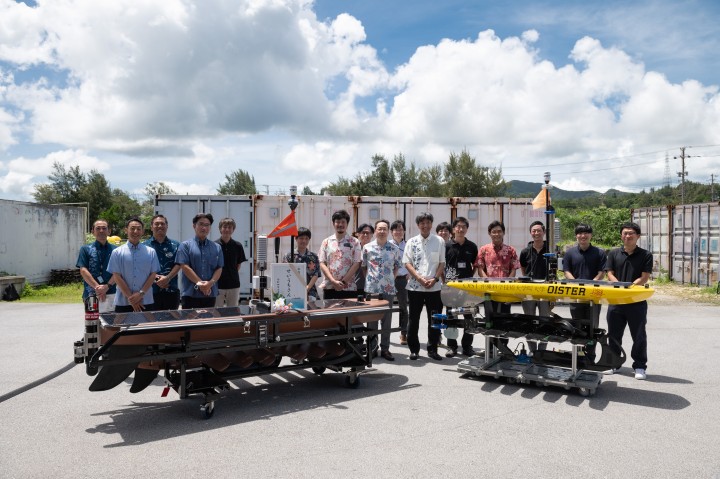
2.Key results
Successful observation of various factors important in predicting typhoon intensity.
[Point 1] Sudden drop in air pressure near the center of the typhoon (violent wind region).
[Point 2] Drop in seawater temperature in two areas (violent and strong wind regions) due to churning by the typhoon.
[Point 3] Sudden increase in significant wave height near the center of the typhoon (in the violent wind region).
These are described in more detail in the next section.
3.Demonstration overview
Typhoon Hinnamnor began on August 28, 2022, near the island of Minamitorishima, with air pressure dropping to 920 hPa as it moved westward and became a violent, Category 5 typhoon. After checking the predicted path of the typhoon, the two Wave Gliders were put into operation.
Seiuchi-san operated in the violent wind region, not less than 11 km from the typhoon center (with average wind speeds of 25 m/s or more), and OISTER operated in the strong wind region approximately 100 km from the center (with average wind speeds of 15 m/s or more). Both vehicles took atmospheric and ocean measurements simultaneously. The typhoon-related observations made are summarized in Table 1.
Air pressure is directly related to intensity of a typhoon, and Seiuchi-san was able to capture sudden, rapid changes in air pressure in the violent wind region of the typhoon. It was able to confirm the lowest pressure value at its closest approach to the typhoon, at approximately 20:00 on August 31. In contrast, OISTER made observations in the strong wind region, and was not able to recognize such drops (Fig. 1 top, Point (1)).
These experiments were also able to measure changes in the temperature of sea water, which is important in estimating the intensity of a typhoon. Changes in water temperature affect the supply of energy to the typhoon and correlate with the strength of the typhoon, so it is another essential element in predicting intensity precisely. With Seiuchi-san near the center of the typhoon, the scientists were able to detect that the drop in sea-water temperature (approx. 2°C) occurred more suddenly (Fig. 1 middle, Point (2)).
Seiuchi-san also measured a maximum wave height of approximately 9 m. Since waves are caused by wind, knowing the wave height makes it possible to estimate wind strength. As such, it is useful to obtain wave height data from directly below a typhoon, but these data have been difficult to obtain from satellite observations (Fig. 1 bottom, Point (3)).
The data also showed changes in the speed of ocean currents as the typhoon passed. The researchers also measured ecosystem factors, including salt concentrations related to nutritive salts, and amounts of chlorophyll a, which is useful for analyzing phytoplankton. The team plan to perform more detailed analysis on the effects of typhoons in the future.
These results were published in the May 22, 2023 issue of Scientific Online Letters on the Atmosphere (SOLA), by the Meteorological Society of Japan, which has been leading meteorological research since it was established in 1882*7.
[Title] Simultaneous Observations of Atmosphere and Ocean Directly under Typhoons Using Autonomous Surface Vehicles
The experiments also collected data on the behavior of the Wave Gliders themselves, in addition to atmospheric and ocean data, including orientation and movement. The scientists will analyze this behavior data and use it to improve observation equipment so that they can continue to make stable observations in the future. They also plan to continue accumulating and verifying observation data, and to develop explanations for the mechanisms of interaction between the atmosphere and the oceans.
3.Future prospects
The research team aim to improve the accuracy of typhoon predictions by establishing methods for making typhoon observations, and to improve typhoon prediction models by explaining the mechanisms at work within typhoons*8. This will enable scientists to more accurately analyze and predict the conditions of typhoons before they reach land.
In the future, the researchers also plan to collaborate with various industries and facilities to optimize methods for real-time typhoon observation, and to apply them in Earth Information Analysis Infrastructure Technology*9 using the Space integrated computing network*10. They will also contribute to realizing a resilient society that can co-exist with typhoons, by adapting proactively to the environment based on highly accurate typhoon prediction.
By using observation data to understand the effects of global warming on typhoons, and conversely, the effects of typhoons on the global environment, the researchers hope to gain a better understanding of the global environment, and be better able to promote changes in our society’ behavior to preserve and regenerate the Earth.
*1 Meteorological Agency: Typhoon size and power.
Japan Aerospace Exploration Agency (JAXA): The life of a typhoon! (Comparing strengths of typhoons and hurricanes)
*2 Results of “Experiments using aircraft observation of 2017 Typhoon No. 21 to analyze and predict typhoon intensity”
*3 Description of Liquid Robotics Inc., Wave Glider S. Mitarai, and J. C. McWilliams, 2016: Wave glider observations of surface winds and currents in the core of Typhoon Danas, Geophysical Research Letters, vol. 43, Issue 21, pp. 11,312-11,319.
*5 NTT and Yokohama National University Begin Joint Research Aimed at Improving the Accuracy of Typhoon Forecasting
*6 Other items observed: Atmospheric: wind speed, temperature, dew point temperature; Marine: current speed, salt concentration, chlorophyll a quantity.
*7 SOLA publication address
*8 Extreme weather observation/prediction/adaptation technology (NTT Space Environment and Energy Laboratories)
*9 Earth Information Analysis Infrastructure Technology (NTT Space Environment and Energy Laboratories)
*10 Space integrated computing network “NTT and SKY Perfect JSAT conclude collaboration agreement on new space enterprise to aid realization of a sustainable society”
Specialties
Research Unit
For press enquiries:
Press Inquiry Form










